Maclaurin series of the sine function
Categories: maclaurin series

In this section we will use the Maclaurin series to find a polynomial approximation to the sine function, sin(x).
The general formula for the Maclaurin series for the function f(x) is:

Where:
- f(0) is the value of the function for x = 0.
- f'(0) is the value of the first derivative function for x = 0.
- f''(0) is the value of the second derivative function for x = 0.
- f'''(0) is the value of the third derivative function for x = 0.
- And so on.
To apply this to the sine function, we need to calculate those derivatives.
Derivatives the sine function
In our case f(x) is the sine function:
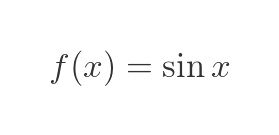
The first derivative of the sine function is the cosine function:
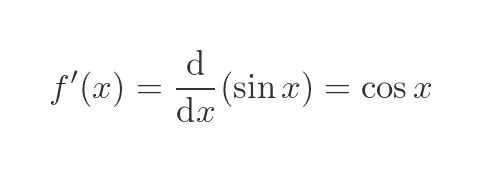
We find the second derivative by differentiating again. If we differentiate the cosine function we get negative sine:

We find the third derivative by differentiating again. If we differentiate negative sine function we get negative cosine:

Finally, we find the fourth derivative by differentiating yet again. If we differentiate negative cosine function we get sine:

We are back to the sine function again. If we differentiate again, the pattern will repeat: s, c, -s, -c, s, c, -s, -s ...
Values of the derivatives at x = 0
The sine of 0 is 0, and the cosine of 0 is 1. This allows us to calculate the following values for f(x) and its derivatives when x = 0: This means that:
- f(0) = 0
- f'(0) = 1
- f''(0) = 0
- f'''(0) = -1
Again, this patten repeats for higher order derivatives: 0, 1, 0, -1, 0, 1, 0, -1 ...
Maclaurin series of sine function
Taking the general equation above:

We can replace f(0), f'(0), and all of the higher order derivatives with the values we found above:

This can be tidied up by removing the zero terms. We have also added some extra terms up to teh term in the 7th power of x:

Or using sigma notation (as described here):
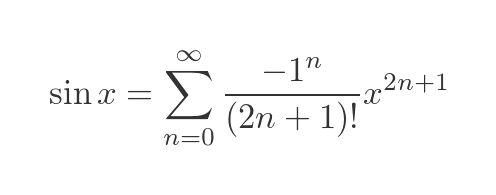
A graphical illustration of the Maclaurin expansion
Here is an animation that shows the first 4 non-zero terms of the expansion being added in one by one:
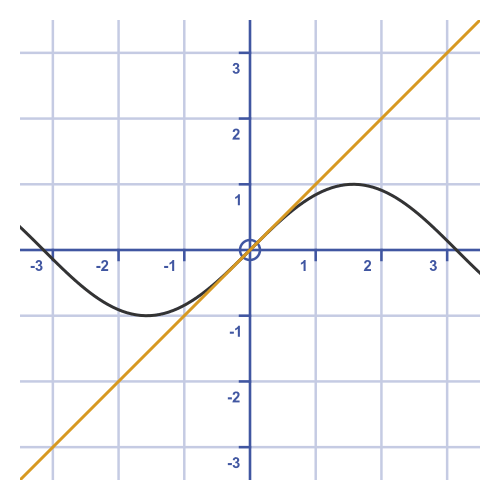
One way to gain an intuitive insight into how the Maclaurin expansion works is to look at graphs of the approximation as we add the terms one by one.
Step 1
Taking just the first term of the expansion gives us:
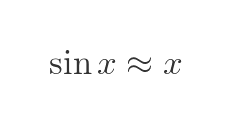
This graph shows the expansion (in yellow) and the sine function (in black):

This approximation is not very good, it is just a diagonal straight line. It has the same value and slope at the sine function at 0, but it diverges away from that point.
Step 2
Taking the first two terms of the expansion gives us:
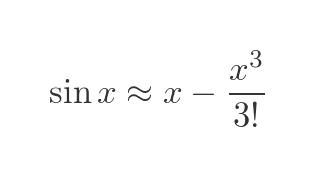
Here is the graph:
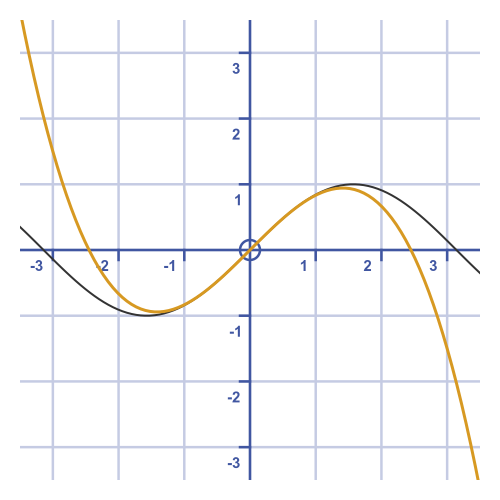
This is a better approximation, and will continue to improve as we add more terms.
Step 3
Taking the first three terms of the expansion gives us:
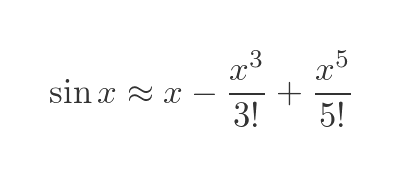
Here is the graph:

Step 4
Taking the first four terms of the expansion gives us:
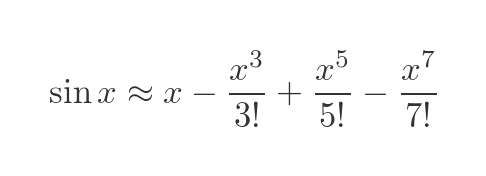
Here is the graph:
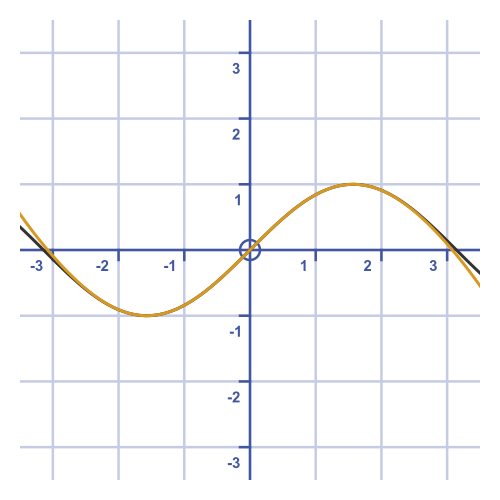
Related articles
Join the GraphicMaths Newsletter
Sign up using this form to receive an email when new content is added to the graphpicmaths or pythoninformer websites:

Popular tags
adder adjacency matrix alu and gate angle answers area argand diagram binary maths cardioid cartesian equation chain rule chord circle cofactor combinations complex modulus complex numbers complex polygon complex power complex root cosh cosine cosine rule countable cpu cube decagon demorgans law derivative determinant diagonal directrix dodecagon e eigenvalue eigenvector ellipse equilateral triangle erf function euclid euler eulers formula eulers identity exercises exponent exponential exterior angle first principles flip-flop focus gabriels horn galileo gamma function gaussian distribution gradient graph hendecagon heptagon heron hexagon hilbert horizontal hyperbola hyperbolic function hyperbolic functions infinity integration integration by parts integration by substitution interior angle inverse function inverse hyperbolic function inverse matrix irrational irrational number irregular polygon isomorphic graph isosceles trapezium isosceles triangle kite koch curve l system lhopitals rule limit line integral locus logarithm maclaurin series major axis matrix matrix algebra mean minor axis n choose r nand gate net newton raphson method nonagon nor gate normal normal distribution not gate octagon or gate parabola parallelogram parametric equation pentagon perimeter permutation matrix permutations pi pi function polar coordinates polynomial power probability probability distribution product rule proof pythagoras proof quadrilateral questions quotient rule radians radius rectangle regular polygon rhombus root sech segment set set-reset flip-flop simpsons rule sine sine rule sinh slope sloping lines solving equations solving triangles square square root squeeze theorem standard curves standard deviation star polygon statistics straight line graphs surface of revolution symmetry tangent tanh transformation transformations translation trapezium triangle turtle graphics uncountable variance vertical volume volume of revolution xnor gate xor gate
